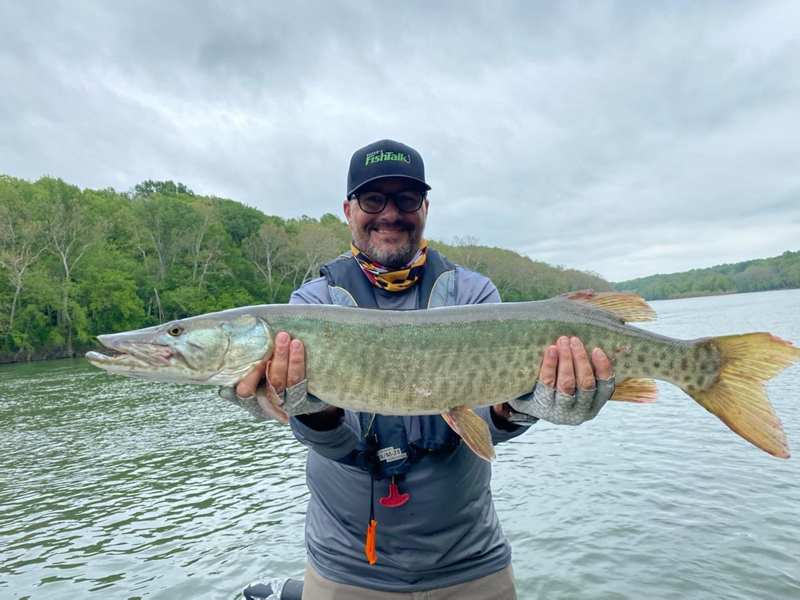It’s a serious feat to catch a muskellunge — they’re only in a few of the region’s waterways (such as the upper Potomac, James, and New Rivers), and they’re anything but easy to catch. March is an excellent month to try for them, however, and early in the spring tossing spinners is a technique that’s effective yet easy to master.

- Choose a mega-spinner in the six- to 10-inch range, with a bulky skirt or tail, huge (#7 to #10) blades, and 5/0 or larger hooks. Many muskie spinners have double blades.
- Choose a heavy rod, something that can handle 50- or even 80-pound braid (tipped with 60- to 80-pound fluorocarbon leader).
- This early in the season look to find muskie more scattered than during periods of low water; covering a ton of water is usually a better move than banging on a few particular hotspots.
- Point your rod directly at the lure during the retrieve, because these mega-spinners create a lot of drag and you’ll tire yourself out if you keep your rod at an angle. Give the lure an erratic cadence by varying the speed as you crank your reel as opposed to jigging the rod.
- Don’t forget to do the figure-eight at the end of each and every cast, just as you would when fishing a plug or plastic.
Remember, weather at this time of year can have a dramatic effect on fishing. In this particular case, rainfall is what you need to be wary of. A little is good, torrents are not. If the upriver waters get riled you may want to postpone your voyage. Then again, if they're slightly muddy, it's a better time than ever to arm yourself with a spinner. They throw out vibrations as the blade spins, which the fish can use to home in on even when visibility is low.